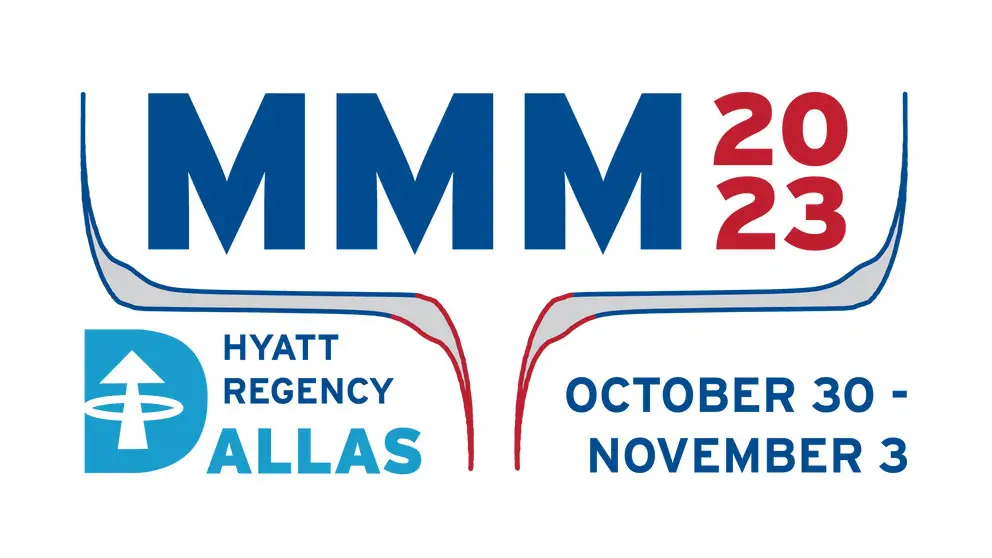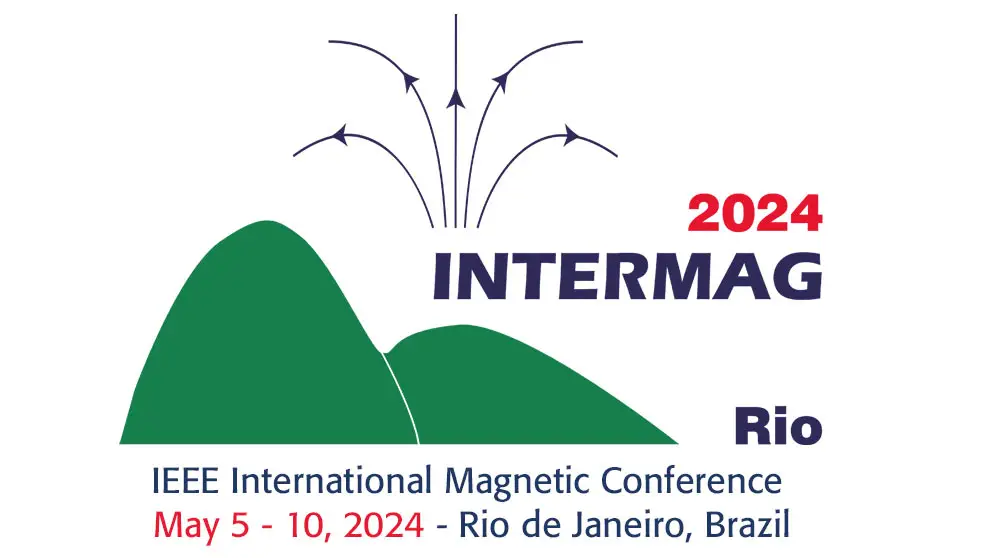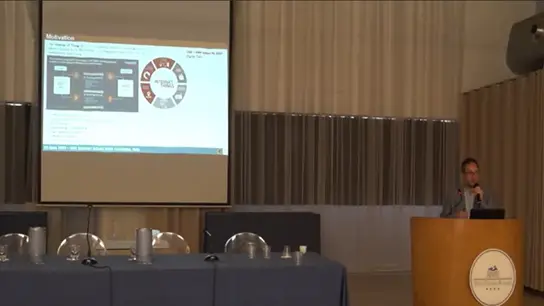EC-06: Giant Magneto-Impedance Effect in Core-Shell CoP@Cu Microwires in a Wide Range of Frequencies
C. Iglesias, J. Marques de Lima, E. Padrón-Hernández, J. P. Sinnecker, S. M. Rezende and F. L. A. Machado
Oral
26 Oct 2023
The penetration depth in high magnetic permeability metallic materials drives the ac electrical current to the surface of the conductor even for moderate values of frequencies (f). This phenomenon is strongly dependent on f and yields values for the magneto-impedance that can vary over one order of magnitude by changing the applied magnetic field (H) by few Oersteds only. This phenomenon was named giant magneto-impedance (GMI) and the domain wall (DW) dynamics and the ferromagnetic resonance (FMR) were found to be the main sources for the f-dependence of the GMI. In this work, the longitudinal (H parallel to the length of the wire) GMI was investigated in 18.9 mm long core-shell structured micro-wires made of thin copper wires (core) and electrodeposited CoP alloys (shell) at room temperature. The measurements were carried out using strip-line waveguides for f varying from 1 MHz up to 9 GHz. Values of GMI of about 100 % were observed for frequencies close to 30 MHz. Moreover, at the microwave regime the FMR yielded resonance parameters that were nicely fit to the Kittel's formula currently used for thin slabs yielding for the CoP alloy a saturation magnetization of 1007 emu/cm3. The magnetic shell can be mapped into a thin slab in the present case because the ratio of the diameter of the core (~ 190 µm) to the thicknesses (2 - 5 µm) of the shell is significantly high (> 40) while the magnetization is oriented along the micro-wire. The crossing over from the DW to the FMR regime was found to be around 50 MHz. Above this frequency the FMR starts to play a major rule yielding splits in the GMI spectra that increase for increasing values of f . The splittings were also found to be highly influenced by the anisotropy field and by the demagnetizing field. A phenomenological model that accounts for the overall response of the GMI with f as well as the observed split is also presented. The CoP alloys were found to be stable for over two decades and as good candidates for applications in devices required to cover a broad range of frequencies as well as in 5G technologies and as microwave absorbers. This work was partially supported by CNPq, CAPES, FACEPE and FINEP (Brazilian Agencies).


